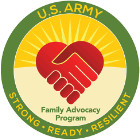Who is on the MDT?
Section 4 of DoDI 6400.10 instructs each installation to coordinate a comprehensive, multidisciplinary, trauma-informed response to address the needs of the children, youth, and families involved in alleged incidents of PSB-CY.
The purpose of the Multidisciplinary Team (MDT) is to:
- Develop written protocols and guidelines for PSB-CT MDT case review in accordance with Service implementing guidance.
- Confirm that a safety and supervision plan is in place for all children and youth exhibiting PSB in all relevant settings such as CDP/YPs and DoDEA schools.
- Facilitate information gathering including intake, screening, assessments, medical appointments, forensic interviews, and clinical service plans to maximize coordination and avoid duplication.
- Coordinate a trauma-informed, developmentally appropriate, evidence-informed assessment and response plan for the exhibiting child or youth; child-focused advocacy for parents for all directly involved children or youth; supportive
services for the impacted child and family; and services that are accessible and tailored to meet the individual and unique needs of children and families. - Review all open problematic cases until FAP related services are completed or discontinued, any juvenile or criminal court involvement has ended, and community risk factors have been addressed.
To achieve these objectives, both a Core PSB-CY MDT and an Expanded PSB-CY MDT are formed.
The core PSB-CY MDT includes representatives from:
- FAP (who serves as chair of the MDT)
- Military Law Enforcement (e.g., MCIO) relevant to the case
- Child Development Program/Youth Program (CDP/YP) (only when CDP/YP is the referral source or if the child or youth’s PSB occurred in a CDP/YP-sponsored setting)
- DoDEA (only when DoDEA is the referral source or if the child or youth’s PSB occurred in a DoDEA-sponsored setting)
The expanded PSB-CY MDT includes the following representatives, depending on the involvement of other DoD and civilian entities in the incident:
- CDP/YP (when CDP/YP is not the referral source and the PSB did not occur in a CDP/YP-sponsored setting but the children or youth are enrolled in the CDP/YP programs)
- DoDEA (when DoDEA is not the referral source and the PSB did not occur in a DoDEA-sponsored setting but the children or youth are enrolled in the DoDEA schools)
- Military and family life counselors (when supporting DoDEA schools or CDP/YP sponsored settings)
- Staff judge advocate or another attorney from the servicing legal office
- Civilian CPS
- Children’s advocacy center
- MTF (such as Health Care Provider) or Forensic Healthcare Examiner
- Child-focused advocate for parents
- Public affairs office (when the exhibiting or impacted child or youth attends public school)
- Parents and legal guardians (as ad hoc attendees at the discretion of the MDT Chair who will consider personally identifiable information and protected health information disclosures when determining parental and legal guardian attendance)
For the MDT to be the most successful, it is important to develop working relationships with all members of MDT ahead of time. This will ensure a comprehensive, efficient response by the team when PSB-CY incidents do occur.



